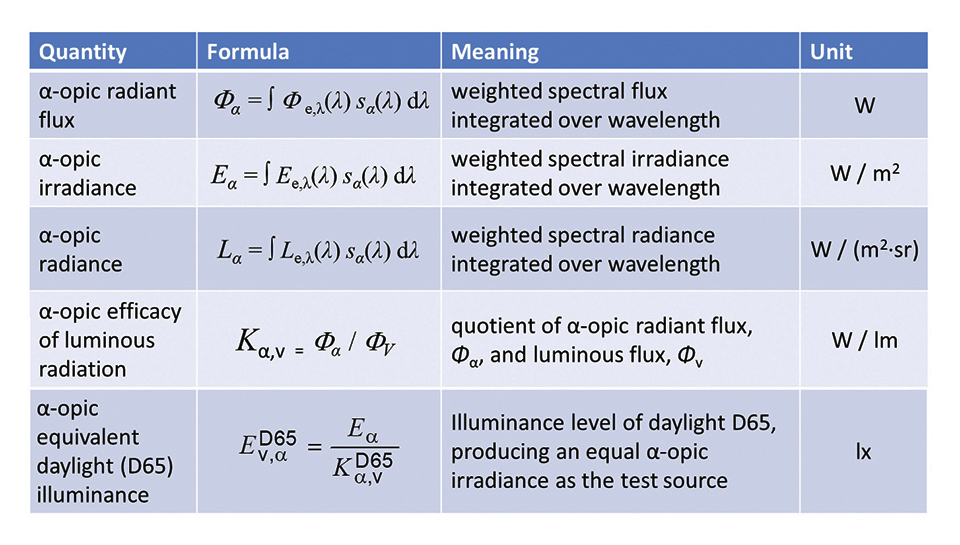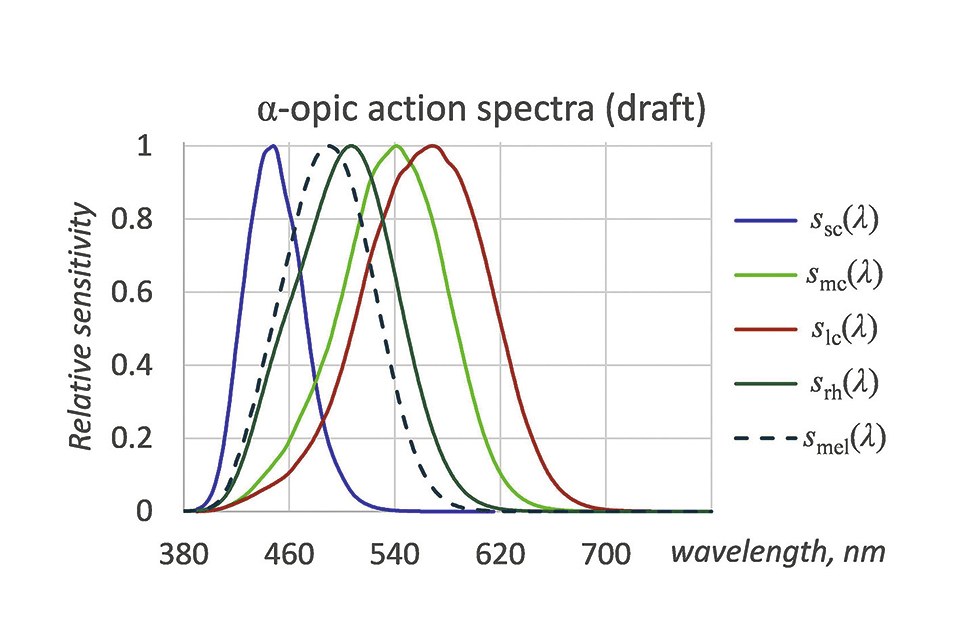CIE Considers the "Good and Bad" of Light
Light, and the wider optical radiation spectrum (ultraviolet and infrared radiation), provides us with many benefits. However, too much may be harmful and too little may mean we cannot carry out our daily activities, or may indeed compromise our well-being. Division 6 of CIE, Photobiology and Photochemistry, is responsible for developing action spectra for the effects of optical radiation on people, as well as flora and fauna. John O'Hagan, Luke Price and Luc Schlangen, respectively, Division 6 director, Division 6 secretary and chair of the Joint Technical Committee (JTC) 9, explain the work done to determine the balance between risk and benefit from exposure to optical radiation.
The risks of being exposed to too much optical radiation from the sun have been known for thousands of years. People who stared at the sun suffered eye injuries. We also have natural aversion responses to very bright light. However, we need sufficient light to carry out our daily activities, ultraviolet radiation to enable our bodies to produce vitamin D and infrared radiation for warmth. Common sense has served us well for most of our evolution.
Until relatively recently, our daily lives were driven by the availability of optical radiation from the sun. We rose when sunlight appeared and sought shelter and sleep as the sun set, probably spending much of the day outdoors. The availability of artificial sources of light (and heat) allowed our ancestors to extend their activities into the evening. However, such light sources were not without risk. Flames, in their many forms, resulted in burns, fires and exposure to noxious fumes. These risks persist for significant numbers of people across the less-developed world.
The incandescent light bulb provided the first really reliable and lower risk source of light, but some risk remained - with up to 95% of the electrical energy being converted to heat instead of light. LED technology has provided a more energy-efficient solution to our lighting needs. However, many health concerns continue to be raised. CIE JTC 5 is currently revising the standard for the photobiological safety of lamps and lamp systems, and this work is nearing completion. The original standard (CIE S009/IEC 62471) defined risk groups and included short descriptors, which were open to misinterpretation. Most lamps and lamp systems are very unlikely to be harmful to people under reasonably foreseeable use. The exceptions are those that emit large amounts of ultraviolet radiation or which are primarily blue-light emitters. LED light sources that use a blue LED and a yellow phosphor will not exceed the blue light exposure limit under normal use exposure conditions. The revised standard is likely to emphasize that only Risk Group 3 lamps and lamp systems are of real concern. It is important that the harmful effects of a small number of optical radiation sources are addressed: this standard requires manufacturers to identify such sources to ensure that users are not at risk.
About the Role of Light for Biological Effects
Light has a significant role in determining our circadian rhythm, and achieves important biological effects that are distinct from perceptual vision. These effects are often referred to as non-image forming or nonvisual effects of light. Many non-visual effects of light are mediated via the eyes and are highly relevant for human health, performance and wellbeing.
These effects are:
• Each morning, light resets our biological clock, thus regulating the
24 hour patterns in our hormones and behavior, our sleep-wake
cycle and our circadian rhythm
• Light can improve alertness, alleviate seasonal and non-seasonal
depression and elicit fast responses in the pupillary reflex or in brain activity
• Too much light at night can disturb sleep and circadian rhythms,
but sufficient daytime light exposure can make us less vulnerable to
the adverse effects of light at night
The stimulation of ocular photoreceptors is essential to elicit the above-mentioned effects of light. The classic receptors for vision, the rods and cones, are relatively well understood and characterised. However, pioneering work over the last 25 years revealed that the eye has another kind of photoreceptor [1]. This photoreceptor has a peak sensitivity in the shorter wavelength part of the visible spectrum and plays an important role in non-visual effects of light. The photoreceptor is known as the ipRGC (intrinsically-photosensitive retinal ganglion cell), and its intrinsic photosensitivity is based on the photopigment melanopsin that is contained within these cells. Apart from their melanopsin-based photoreception, iPRGCs also receive input from the classic photoreceptors (i.e. rods and thee types of cone). In principle, all five photoreceptor types can contribute to non-visual responses to light, where the relative contribution of a single photoreceptor can vary depending on exposure properties such as the (retinal) irradiance, subjective time, light history, light adaptation or sleep pressure.
In 2013, CIE together with ZVEI supported a workshop, which brought together the world experts in the field and resulted in a paper [2], a CIE Technical Note [3] and has also been reflected in CEN/TR 16791:2017 [4]. The experts recognised that the sensors in the eye - the cones, rods and the newly discovered intrinsically-photosensitive retinal ganglion cells, all had a role in circadian rhythm entrainment, and possibly other wellbeing parameter.
About the JTC9 Draft Standard
In 2016, CIE published its Research Strategy, including "Recommendations for Healthful Lighting and Non-Visual Effects of Light " and a more detailed roadmap for the necessary research [5]. In the same year, CIE formed a Joint Technical Committee (JTC 9) to produce a Standard on the CIE System for Metrology of ipRGC Influenced Light Response, as part of that Strategy. The JTC concentrated on the new insights on melanopsin-based photoreception and ipRGC-influenced responses to light and how to incorporate them into the methods that we use to quantify and assess light and lighting. In February 2018 the JTC9 draft standard passed its first CIE ballot and the comments are currently being addressed to finalise the draft international standard (DIS) that is expected to be published this summer. The JTC9 draft standard defines metrics, quantities and spectral sensitivity functions to describe optical radiation/light for its ability to stimulate each of the five photoreceptor classes (rod-, L cone-, M cone-, S cone- and melanopsin-based) that can contribute to retina-mediated non-visual effects of light in humans.
 Figure 2: Example of α-opic quantities in the draft CIE S026 (α-opic can be: S-cone-opic; M-cone-opic; L-cone-opic; Rhodopic; Melanopic)
Figure 2: Example of α-opic quantities in the draft CIE S026 (α-opic can be: S-cone-opic; M-cone-opic; L-cone-opic; Rhodopic; Melanopic)
Each photoreceptor input is characterized by its own alpha opic radiance or irradiance, where alpha stands for one of the five photoreceptor classes (Figure 1). Each alpha-opic photoreceptor input can also be expressed in terms of an alpha-opic equivalent daylight (D65) luminance or illuminance. This specifies the amount of daylight (D65) that is needed to achieve the corresponding alpha-opic radiance or irradiance. With these definitions (Figure 2), the standard will facilitate the development and testing of more advanced models, in which photoreceptor inputs are combined and used to predict how to achieve (or avoid) a specific non-visual effect. There are important limitations: the standard will only provide tools to quantify the optical radiation received, and cannot on its own define which daytime and night time light exposures are beneficial, or counterproductive for health and well-being. It is necessary to take into account interactions between exposure duration, intensity, spectrum, timing and prior light history. However, it is intended that the standard will ensure that researchers report their exposure metrics in a common format so that studies can be compared. In time, it is hoped that the relative importance of the five photoreceptors can be quantified for specific positive and negative effects of light exposure on health and well-being.
Next Steps
During the upcoming 12-week ballot period on this draft international standard (DIS) "CIE system for metrology of optical radiation for ipRGC-influenced Responses to Light", the CIE welcomes any feedback through your CIE National Committee. An expert tutorial is planned to take place after publication.
CIE Division 6 also has the remit for developing action spectra for non-human exposure to optical radiation. Of particular interest is the development of internationally agreed action spectra for food production under artificial light. CIE is hoping to launch a new Technical Committee to undertake this work and welcomes expressions of interest (via ciecb@cie.co.at).
References:
[1] Sekaran, S., Foster, R.G., Lucas, R.J. and Hankins, M.W., 2003.
Calcium imaging reveals a network of intrinsically light-sensitive
inner-retinal neurons. Current biology, 13(15), pp.1290-1298
[2] Lucas, R.J., Peirson, S.N., Berson, D.M., Brown, T.M., Cooper, H.M.,
Czeisler, C.A., Figueiro, M.G., Gamlin, P.D., Lockley, S.W., O'Hagan,
J.B. and Price, L.L., 2014. Measuring and using light in the melanopsin
age. Trends in neurosciences, 37(1), pp.1-9
[3] CIE TN 003:2015 Report on the First International Workshop on
Circadian and Neurophysiological Photometry, 2015. Vienna, Austria
[4] CEN/TR 16791:2017 Quantifying irradiance for eye-mediated
non-image-forming effects of light in humans, 2017, Brussels, Belgium
[5] CIE 218:2016 Research roadmap for healthful interior lighting
applications. Vienna, Austria

